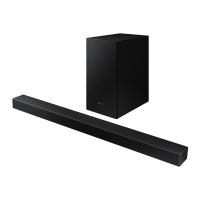1-1
1. Precautions
• Follow these safety instructions while servicing the ESD to prevent damage and to protect against potential hazards such as
electrical shock and X-rays.
Warning
• For continued safety, do not attempt to modify the circuit board.
• Disconnect the AC power and DC power jack before servicing.
1-1. Safety Precautions
1. When reinstalling the chassis and its assemblies, be sure to restore all of the protective devices, including the control
knobs and the compartment covers.
2.
Make sure that there are no cabinet openings through which people (particularly children) can make contact with
dangerous internal components.
3.
Design Alteration Warning:
Never alter or add to the mechanical or electrical design of the unit.
Example: Do not add auxiliary audio or video connectors. Such alterations might create a safety hazard.
Also, any design changes or additions will void the manufacturer’s warranty.
4.
Leakage Current Hot Check. Fig. 1-1 AC Leakage Test
Warning
• Do not use an isolation transformer during
this test.
• Use a leakage current tester or a metering
system that complies with American
National Standards Institute (ANSI C101.1,
Leakage Current for Appliances), and
Underwriters Laboratories (UL Publication
UL1410, 59.7).
With the unit completely reassembled, plug the AC cord directly
into a 120V AC outlet. With the unit’s power switched
from the ON to the OFF position, measure the current between
a known ground and all exposed metal parts.
Known Grounds - Earth
Known Metal parts - screwheads, metal cabinets, etc.
<Fig. 1-1 AC Leakage Test>
DEVICE
UNDER
TEST
(READING SHOULD)
NOT BE ABOVE 0.5mA
LEAKAGE
CURRENT
TESTER
TEST ALL
EXPOSED METAL
SURFACES
2-WIRE CORD
ALSO TEST WITH
PLUG REVERSED
(USING AC ADAPTER
PLUG AS REQUIRED)
EARTH
GROUND

